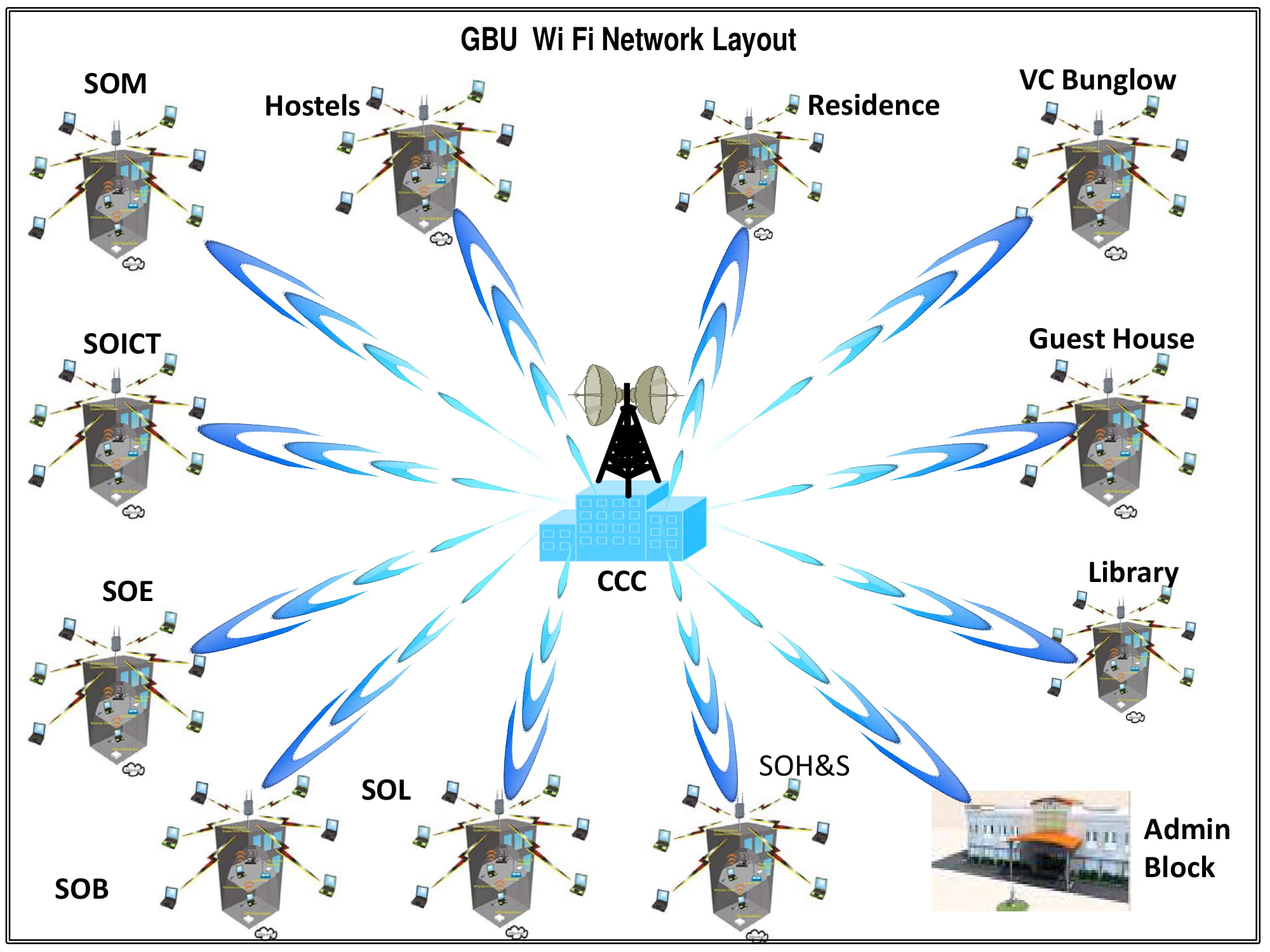Local Area Network
- All systems are linked by a Giga based Local Area Network. The entire campus has been provided
with state of the art network based on Giga cables. It has been extended on optical fiber
backbone to cover each and every corner of the University.
- A local area network (LAN) supplies networking capability to a group of computers in close
proximity to each other such as in an university building, a school, or residence. A LAN is
useful for sharing resources like files, printers, games or other applications.
- A LAN in turn often connects to other LANs, and to the Internet or other WAN. Most local area
networks are built with relatively inexpensive hardware such as Ethernet cables, network
adapters, and hubs. Wireless LAN and other more advanced LAN hardware options also exist.
Wireless Networks
- Wireless networks are based on the IEEE 802.11 standards. A basic wireless network consists of
multiple stations communicating with radios that broadcast in 2.4GHz.
- 802.11 networks are organized in two ways: in a BSS one station acts as a master with all the
other stations associating to it; this is termed infrastructure mode and the master station is
termed an access point (AP).
- In BSS mode all communication passes through the AP; even when one station wants to communicate
with another wireless station messages must go through the AP. In the second form of network
there is no master and stations communicate directly. This form of network is termed an IBSS and
is commonly know as an adhoc network.

